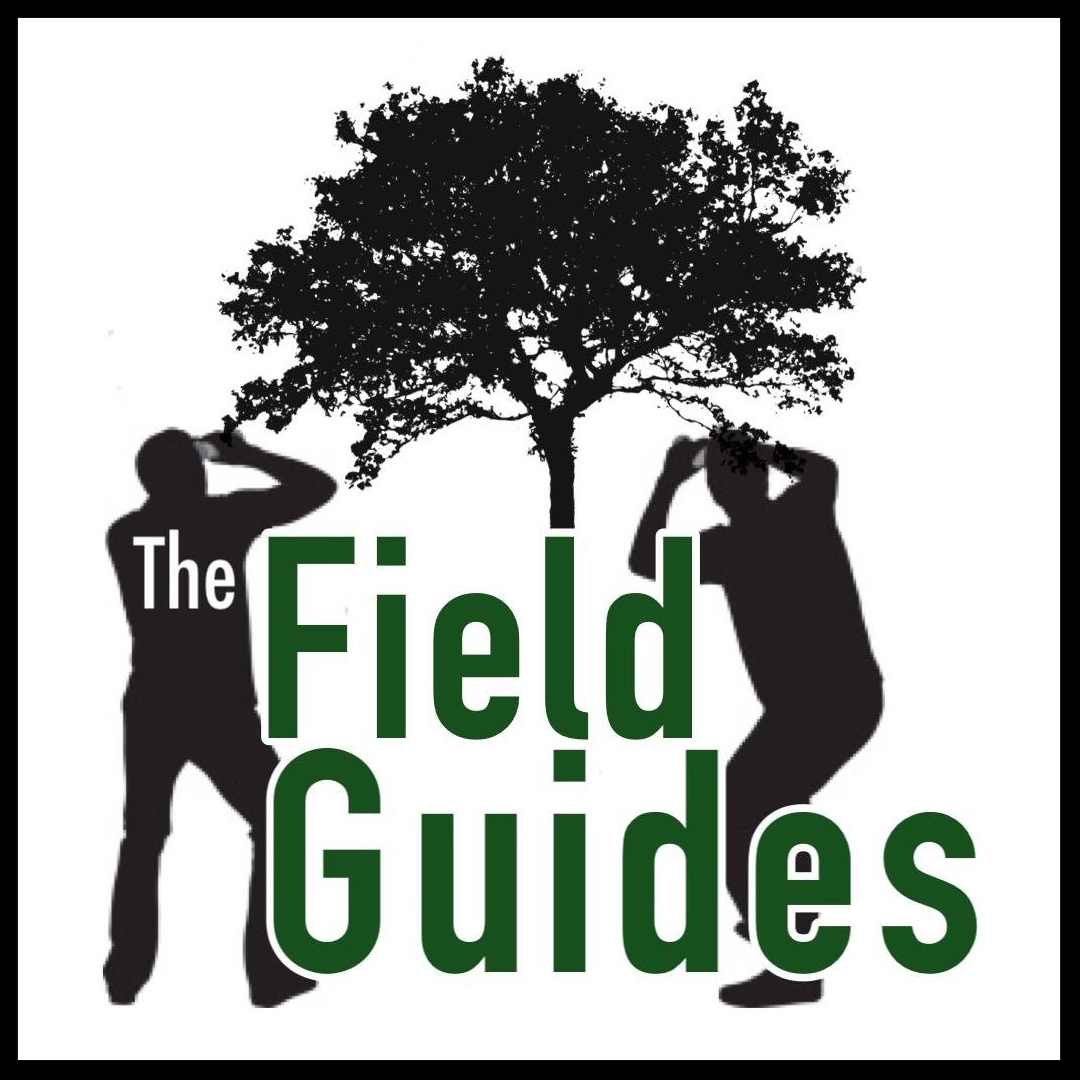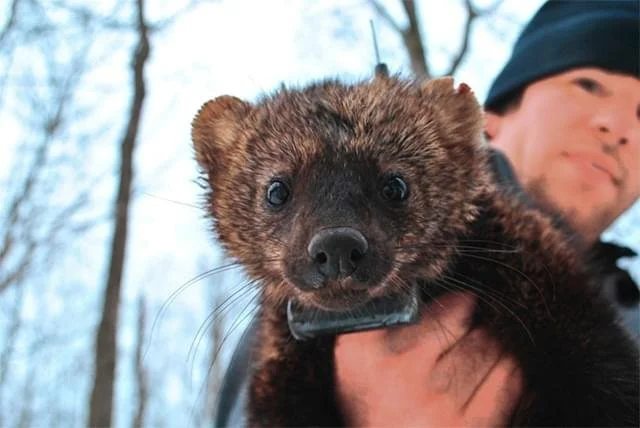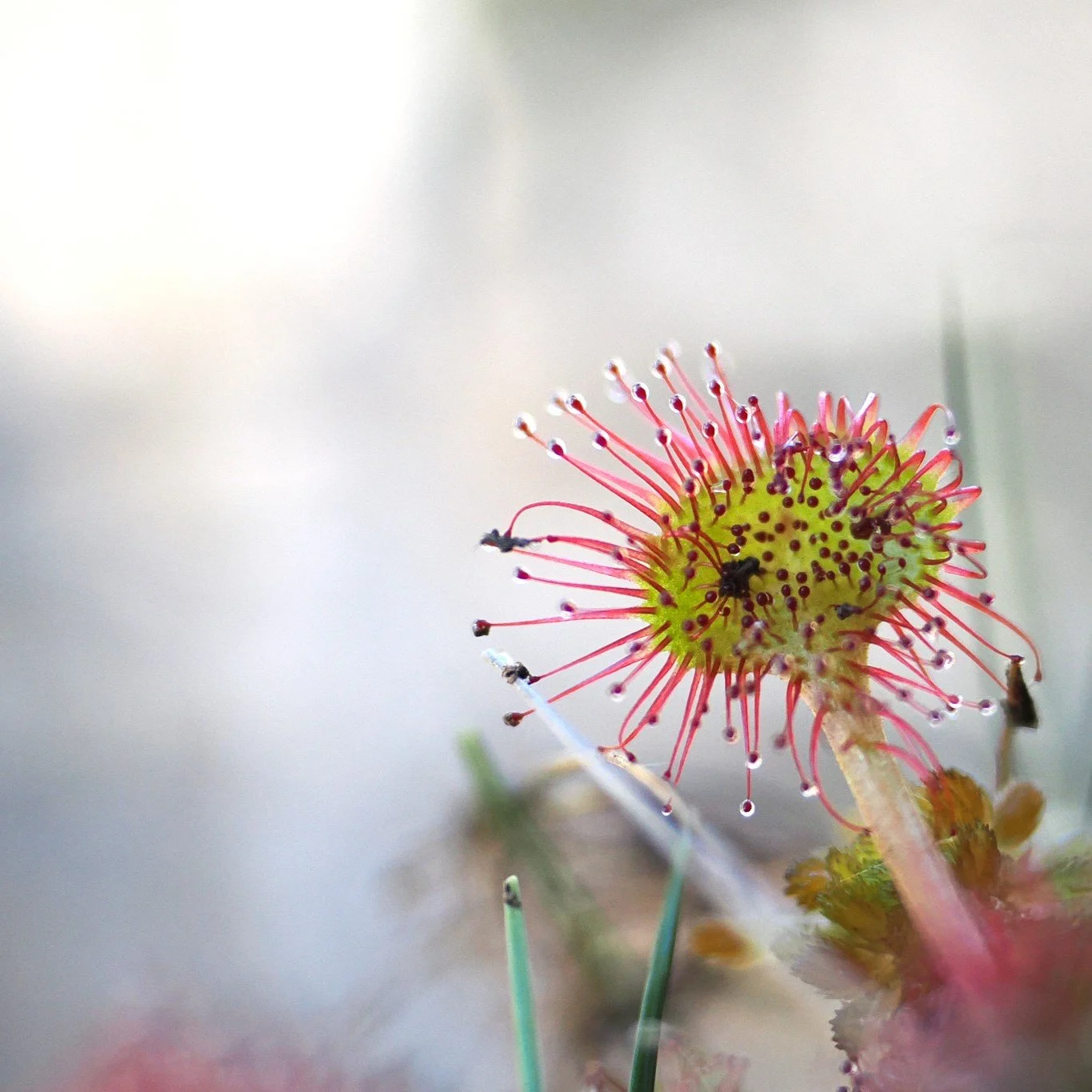Bill and Steve dive into a tiny, bustling world - a world that’s hiding on the feathers of the birds we see every day. Joining them is Dr. Alix Matthews, postdoctoral research associate in the Department of Biological Sciences at the University at Buffalo, and she reveals the strange lives of feather mites — how these barely-visible hitchhikers feed and get around and whether or not they’re helping or hurting their avian hosts.
Ep. 75 - A Naturalist's Life (Part 2) - A "Hike" with Sandy Geffner
Part 2 of our time in the woods with naturalist Sandy Geffner. This time, Sandy leads Steve and Bill on a “hike”—though with Sandy, the word takes on a different meaning. You might not cover much distance, but you’ll travel miles in understanding: exploring ecology and hearing stories of the forest and the wildlife within it. Enjoy!
Ep. 75 - A Naturalist's Life (Part 1) - A Conversation with Sandy Geffner
What exactly is a “naturalist”? Spend a little time with Sandy Geffner, and you’ll find out. Steve and Bill rarely go more than an episode or two without mentioning him—a naturalist who profoundly shaped both their lives. This month, they head into the woods to talk with Sandy about how a baseball-loving kid from Long Island became someone who’s inspired countless people to deepen their connection with the natural world.
Ep. 74 - Like A Sturgeon
It’s hard to believe, but we’re doing another episode on fish! This time around, Steve introduces us to the Sturgeon (family Acipenseridae), from their dinosaur-era origins to their caviar-fueled scandals (did you know Beluga caviar comes from Sturgeon? Bill didn’t either). So strap in as the guys touch on Sturgeon, for the very first time.
This episode was recorded on June 29, 2025 at Eighteenmile Creek County Park in Hamburg, NY.
Ep. 72 - Grass Carp: A Reel Problem
Ep. 71 - The Field Guides Go Crikey!
The guys return to Everglades National Park, again looking for a predator that Daniel wants to get too close to: the American crocodile (Crocodylus acutus). Listen in as Daniel shares some research, busts croc-related myths, and Steve probably gets a little too excited about how crocs deal with salt water. Bill doesn’t have much to say, but he’s there, too. Enjoy!
This episode was recorded on January 7, 2025 on the Bear Lake Trail in Everglades National Park. The last little bit was also recorded in the Park at the Flamingo Marina.
Ep. 70 - Saving the Blue Iguana
This month, we head to the tropics and meet the Blue Iguana of the Cayman Islands! This endangered lizard is found nowhere else on the globe save for the island of Grand Cayman in the Caribbean, and just two decades ago, it’s likely there were fewer than 25 animals remaining in the wild. This was a species that was functionally extinct, but thanks to the herculean efforts of a dedicated group of people, the Blue Iguana (Cyclura lewisi) has been brought back from the brink, with over 1000 iguanas now roaming the dry, rocky forests of Grand Cayman. In July of 2024 Bill traveled there to interview Fred Burton, the man many people credit as the main driver behind the effort to save this endemic species.
Ep. 69 - Rewilding Floreana (with Fundación Jocotoco)
How hard is it to reintroduce species to a tropical island? Turns out, pretty hard! But it’s so worth it. The rewilding of the Galapagos island of Floreana will make it the largest tropical island ever to be rewilded. Researchers have spent over a decade meticulously planning for the reintroduction of the iconic Floreana Giant Tortoise (Chelonoidis niger niger). Once thought to be extinct, this species, along with eleven other locally extinct endemic animal species, are part of a reintroduction project that has involved the massive task of eradication of introduced predators, as well as the purposeful inclusion of the local population throughout the planning process. This month, Bill and Steve are completely out of their depth, discussing the project with three staff members from Fundación Jocotoco, one of the organizations leading the charge to Rewild Floreana.
This episode’s special guests are Paola Sangolquí, Jocotoco’s Galapagos Program Marine Coordinator, Julieta Muñoz, Conservation Strategy Manager, and Jajean Rose-Burney, the Director of Jocotoco US.
Ep. 67 - Fishers in the Field: A Hike with Fisher Researcher Dr. Scott LaPoint
If we want to help wildlife, we need to know when and where they’re moving on the landscape. Dr. Scott LaPoint has spent his career researching just that. When our recent episode on fisher cats left us with a lot of questions, we figured who better to help us out than Dr. LaPoint. He was kind enough to join Daniel and Bill for a hike, sharing his expertise and his amazing ability to communicate science with enthusiasm, humor, and clarity. Join the guys for a wide-ranging discussion on fishers, connectivity, and wildlife-human interaction.
Ep. 63 - Field Trip!: On the Trail of the Florida Panther
Ep. 61 - Bill and Steve’s Floating Fen Foray (featuring the WNY Land Conservancy)
This month, Bill and Steve visit Floating Fen, although some might call it a bog, or is it a swamp? Thankfully, they’re joined by Erik Danielson, Stewardship Coordinator of the Western NY Land Conservancy (WNYLC), who schools them on the difference between these wetlands. Erik and the WNYLC are trying to preserve Floating Fen, a property home to a unique wetland, extraordinary wildlife, and a diverse forest. Erik guides Bill and Steve through the fen, discussing just what makes a bog a bog and a fen a fen, as well as what makes these peatlands such amazing habitats.
Ep. 59 - Beavers! (No Damn Puns, Please)
They’re hard-working, tail-slapping, tree cutting machines, and they’re one of the greatest wildlife recovery stories in North America: Castor canadensis, the North American beaver. And, as if all that weren’t enough, apparently their rear ends produce an oil that’s vanilla-scented. Join the guys as they keep their puns and innuendos in check and dive into beavers!
Ep. 56 - Let's Get Nuts!
Black Walnut (Juglans nigra) is a tree well-known for its ability to negatively affect other plants growing nearby, a phenomenon known as allelopathy. But is Black Walnut really as allelopathic as the Internet would have you believe? In this episode, the guys go nuts: delving into this question and many other facets of the fascinating (and tasty?) Black Walnut, including an on-air tasting of Black Walnut syrup. Enjoy!
Ep. 55 - Bill and Steve Go to Hell(benders)
What’s dark and slimy and over two feet long? It’s an Eastern Hellbender! This aquatic giant salamander, endemic to the eastern and central US, is the largest amphibian in North America, often weighing in at over 4 lbs.! The hellbender (Cryptobranchus alleganiensis) is, not unlike Steve, secretive and slimy but also fascinating. Join the guys for one hell of an episode learning about this rare and disappearing denizen of fast-moving streams.
Ep. 54 - Can't Touch This: A Deep Dive Into Touch-me-not
Jewelweed. Spotted touch-me-not. Orange Balsam. It’s a plant known by many names, and, even if you don’t recognize any of them, you’ve probably popped one of its exploding seed pods. A favorite of hummingbirds and nature-lovers young and old, it’s a species with many stories to share. Listen in as the guys dive deep into the jewelweed patch, eating some seeds, trying to find the source of the “jewel” in jewelweed’s name, and getting to the bottom of the age-old claim that jewelweed is a cure for poison ivy.
Ep. 53 - The American Chestnut & the Western NY Land Conservancy @ the Allegany Wildlands (Part 2)
In part 2 of this month’s episode, the guys share how past and present research come together to create a realistic plan for bringing the American chestnut back, and Erik shares more about how the Allegany Wildlands fit into the Conservancy’s ambitious effort to create the Western NY Wildway, a network of connected protected lands stretching from Pennsylvania to the Great Lakes and beyond.
Ep. 53 - The American Chestnut & the Western NY Land Conservancy @ the Allegany Wildlands (Part 1)
This month, Bill and Steve look into the fall and (potential) rise of the American chestnut (Castanea dentata), and they’re joined by Erik Danielson, Stewardship Coordinator of the Western NY Land Conservancy. The Conservancy recently embarked on an effort to acquire the Allegany Wildlands, a unique piece of property that harbors, among its many abundant ecological treasures, remnant American chestnuts. Erik guides Bill and Steve through the property, and, in part 1 of this episode, they discuss the history of the chestnut and the blight that caused its downfall.
Ep. 52 - Who's Your Daddy (Longlegs)?
This month, the guys set out to discover if daddy longlegs really are the most poisonous spider in the world, but, along the way, they uncover a fascinating array of arachnids and adaptations in the group known collectively as harvestmen. Join them for some mythbusting and a deep dive into the little-known order of arachnids called Opiliones.
Ep. 51 - Flickers Foolin' Around: Sex Roles in a North American Woodpecker
The northern flicker (Colaptes auratus) is a common bird that has some exceptionally uncommon behaviors. Unlike most bird species, male flickers take an equal share of egg incubation and feeding, and, in up to five percent of females, a lady flicker will take up with two mates - an older male and a younger male - raising young in two different nests at the same time. In addition, flickers will sometimes lay their eggs in the nests of other flickers, a behavior called intraspecific brood parasitism, another habit rarely seen in birds. Join the guys as they delve into studies exploring the wild and swinging world of northern flicker reproduction.
Ep. 49 - Whither the Snowy Owl? (Part 2)
This winter (2021) marked the first time a Snowy Owl (Bubo scandiacus) was spotted in New York City’s Central Park in 130 years. Why was it there? Where did it come from? Since 99.9% of the population immediately just thinks of Harry Potter when Snowy Owls are mentioned, the guys wanted to cast the proverbial “Lumos!” and shed some light on the subject.
Join them and guest Daniel Mlodozeniec (photographer and naturalist) as they delve into the Snowy Owl’s ecology in part 1. Then, in part 2, come along as they look into the research behind what drives Snowy Owl irruptions, those irregular migrations that cause Snowies to end up in Central Park and even in places like Bermuda and Hawaii!





















